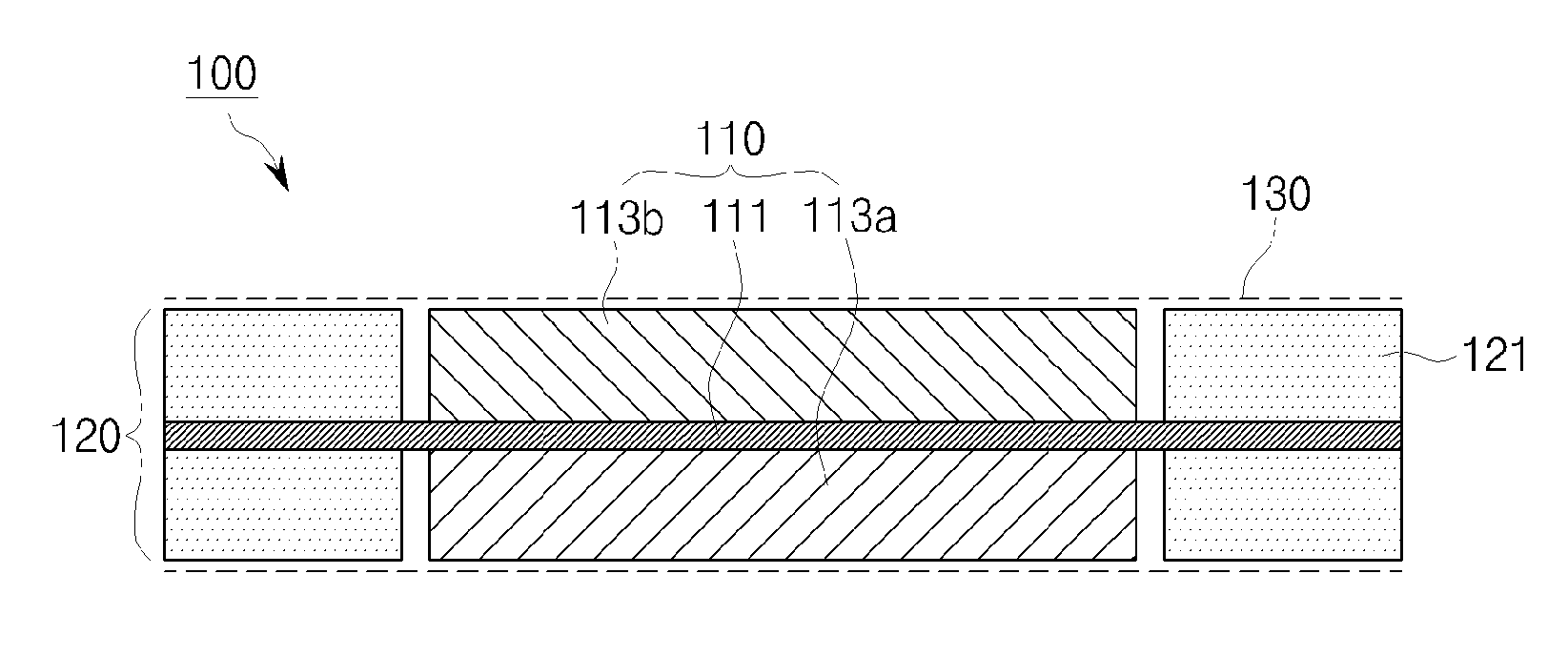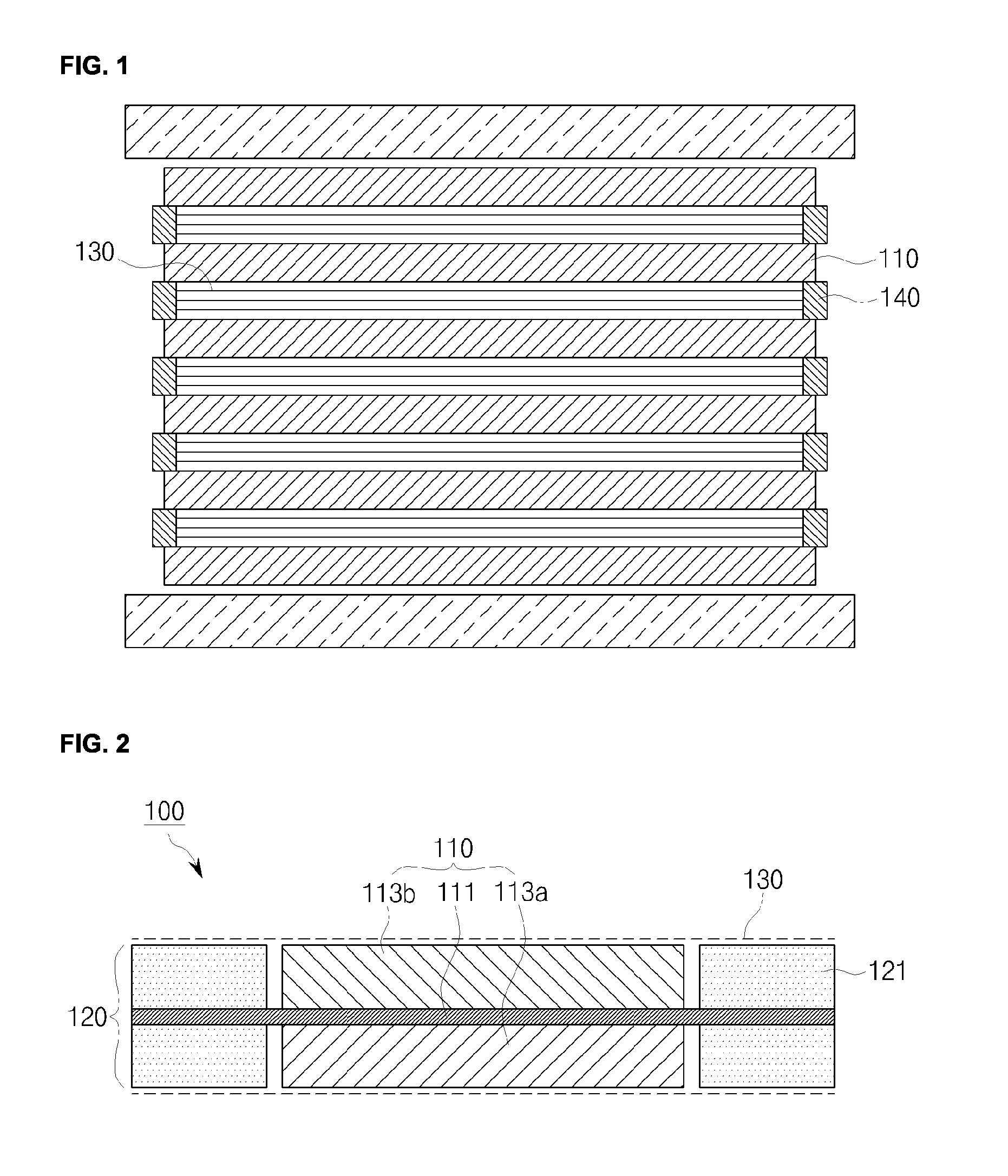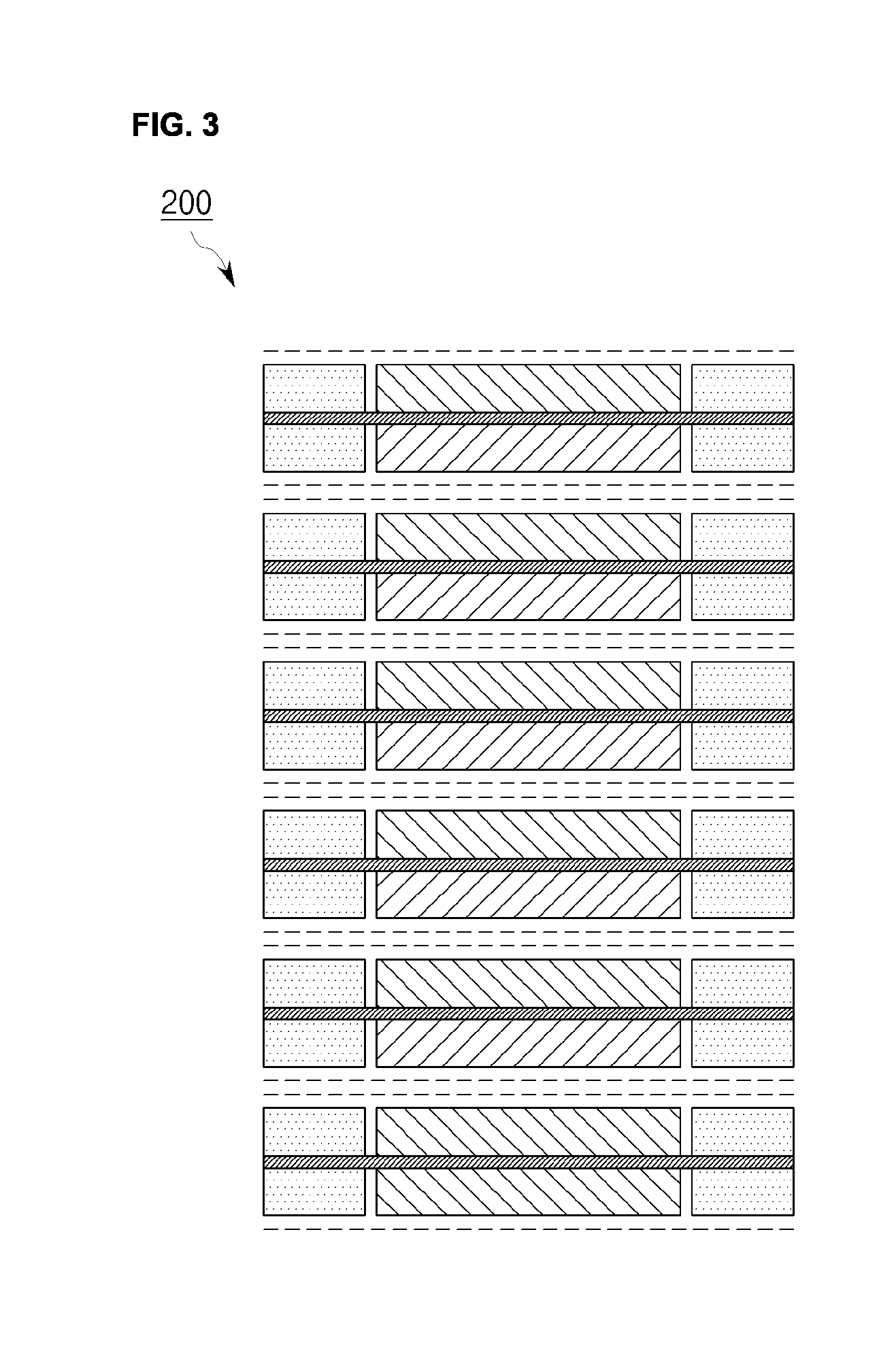Bipolar electrode/separator assembly, bipolar battery comprising the same and method of manufacturing the same
a separation assembly and battery technology, applied in sustainable manufacturing/processing, paper/cardboard containers, furnaces, etc., can solve the problems of low usability of high molecular solid electrolyte, low power or energy density, and low usability of series connection, so as to simplify and facilitate the related art sealing process
- Summary
- Abstract
- Description
- Claims
- Application Information
AI Technical Summary
Benefits of technology
Problems solved by technology
Method used
Image
Examples
embodiment
[0068]A slurry for the positive electrode 113a, containing lithium manganese oxide (LMO) as a positive electrode active material for the positive electrode 113a, carbon black as a conducting agent, and PVDF as a binder, is applied on one side of an aluminum foil serving as the collector 111, and a slurry for the negative electrode 113b, containing a lithium titanium oxide (LTO), carbon black as a conducting agent, PVDF as a binder, is applied on the other side of the aluminum foil. Thereafter, the resultant structure is dried by hot air at a temperature of 150° C. for two minutes.
[0069]Subsequently, a modified PE polymer is applied as the adhesive film 121 to both the top and bottom surfaces of the two opposing sides of four electrode-uncoated edge surfaces of the collector 111 to be spaced apart from the edges of the electrode layers 113a and 113b at a predetermined distance.
[0070]Thereafter, a porous nonwoven fabric of a PET material as the separator 130 is stacked on both the top...
PUM
| Property | Measurement | Unit |
|---|---|---|
| thickness | aaaaa | aaaaa |
| temperature | aaaaa | aaaaa |
| thickness | aaaaa | aaaaa |
Abstract
Description
Claims
Application Information
 Login to View More
Login to View More - R&D
- Intellectual Property
- Life Sciences
- Materials
- Tech Scout
- Unparalleled Data Quality
- Higher Quality Content
- 60% Fewer Hallucinations
Browse by: Latest US Patents, China's latest patents, Technical Efficacy Thesaurus, Application Domain, Technology Topic, Popular Technical Reports.
© 2025 PatSnap. All rights reserved.Legal|Privacy policy|Modern Slavery Act Transparency Statement|Sitemap|About US| Contact US: help@patsnap.com



